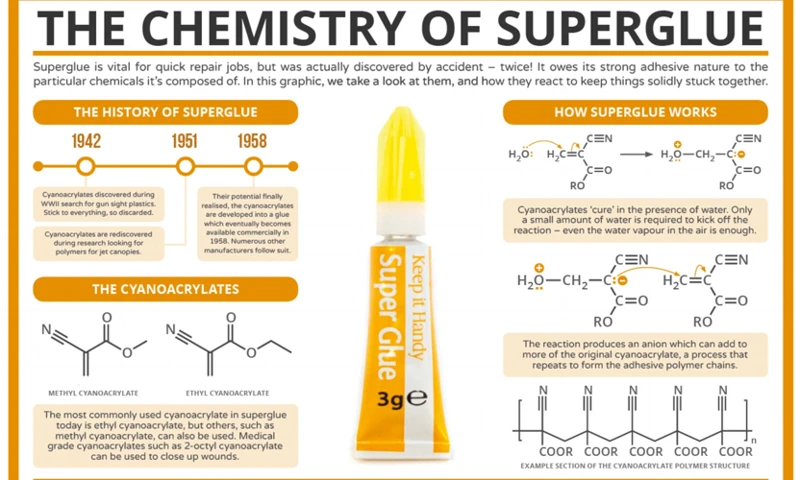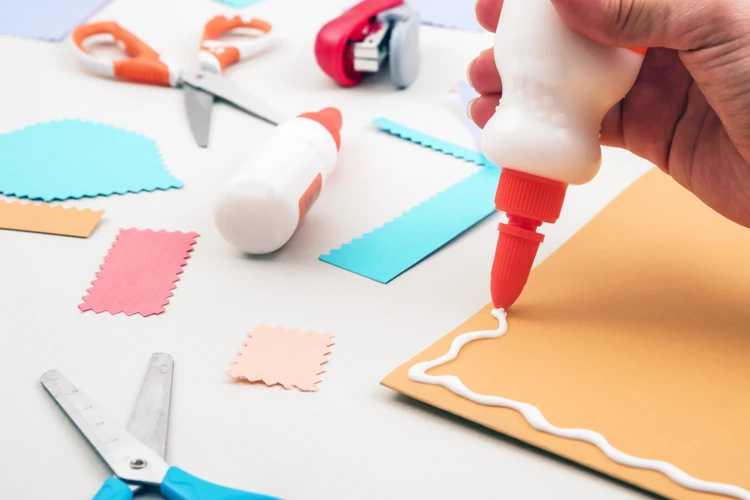Adhesives are a ubiquitous part of our daily lives, yet the reason why glue is sticky might not be something we often consider. The sticky nature of glue is a curious phenomenon that’s as practical as it is fascinating. In this exploration of adhesives, we will delve into the intricate world of what makes glue sticky and why this property is so essential in various applications.
Understanding Adhesion: The Science Behind Stickiness
What Makes Something Sticky
The question of what makes something sticky can be answered through the science of adhesion. Adhesion refers to the process where two separate materials bond together at the molecular level. This bonding can occur through several mechanisms, including mechanical interlocking, chemical bonds, and electrostatic forces. The nature of these interactions determines the level of stickiness a material exhibits.
Why Is Glue So Sticky
So, why is glue so sticky? The answer lies in its ability to form long-lasting bonds between surfaces. Glue achieves this by flowing into the microscopic pores of the objects being joined and then hardening. As a result, a physical bond is created that is difficult to break. Glue’s stickiness is also due to its specific formulation, which allows it to maintain a certain level of flexibility and tackiness once dried.
The Chemistry of Glue
What Chemical Makes Glue Sticky
Understanding what chemical makes glue sticky requires a dive into its composition. Glue typically contains polymers – large molecules that form repeating units – which are responsible for its adhesive properties. These polymers interact with the surface of the material and among themselves, creating a sticky matrix that effectively holds objects together.
Exploring Adhesive Compounds
Adhesive compounds vary depending on the type of glue, but all share the common goal of achieving maximum stickiness. These compounds can be natural, such as casein in milk-based glues, or synthetic, like polyvinyl acetate in PVA glues. The molecular structure and the physical properties of these compounds are tailored to suit different sticking needs, from temporary paper bonds to permanent wood joinery.
The Creation of Glue
What Makes Glue
The process of what makes glue involves combining various ingredients to achieve the desired sticky effect. These ingredients can include resins, plasticizers, and solvents, each playing a role in providing the glue with its unique characteristics. The precise recipe is critical, as even small changes can significantly impact the performance of the adhesive.
The Evolution of Adhesive Materials
Adhesive materials have evolved considerably over time. Ancient civilizations used natural substances like tree sap and beeswax as adhesives. Modern science has developed a plethora of synthetic adhesives, each engineered for specific tasks. This evolution reflects our growing understanding of the chemistry and physics involved in making substances stick.
Types of Stickiness
What Makes Stickers Sticky
Stickers rely on a pressure-sensitive adhesive that remains tacky at room temperature. This allows stickers to be applied with light pressure without the need for heat or water. The stickiness of stickers is typically less aggressive than other adhesives, allowing for repositioning or removal without leaving residue.
What Makes Things Sticky
When pondering what makes things sticky, it’s important to recognize the variety of adhesive interactions. Stickiness can arise from molecular attractions like van der Waals forces, hydrogen bonding, or even moisture-activated adhesives. The specific type of stickiness depends on the materials in question and the context of their use.
Applications and Uses of Glue
Glue’s ability to form strong, lasting bonds makes it invaluable in countless applications. From the simple task of sealing an envelope to the complex requirements of aerospace engineering, adhesives play a critical role. In construction, woodworking, electronics, and medical industries, the uses of glue are as diverse as they are essential. The ability to tailor the stickiness of glue to specific tasks makes it an indispensable tool in both domestic and industrial contexts.
When it comes to adhesive products, understanding the science behind them can be quite intriguing. If you’ve ever wondered why nail glue is sticky, or pondered the properties of different types of adhesives like cold glue, our articles provide in-depth explanations. Additionally, concerns about safety are common, so we also delve into topics such as the toxicity of nail glue to help you use these products with confidence and care.
Conclusion: The Sticky Phenomenon
The sticky phenomenon of glue is a marvel of chemistry and physics. From understanding what makes glue sticky to exploring the diverse applications it serves, the world of adhesives is as intricate as it is important. Why glue is sticky is not just a question of its chemical composition but also a testament to human innovation in creating substances that improve our lives in myriad ways.



